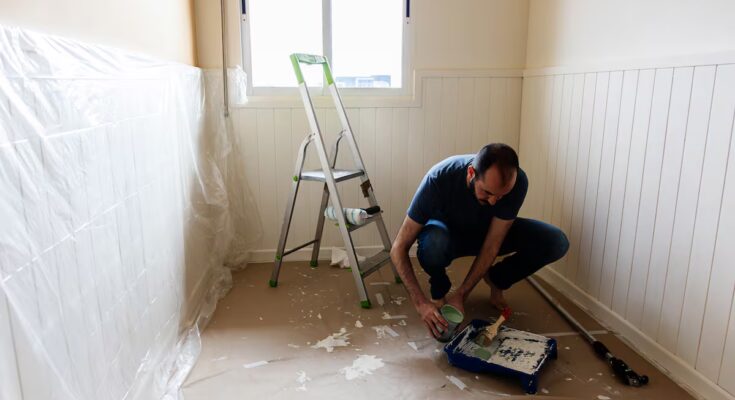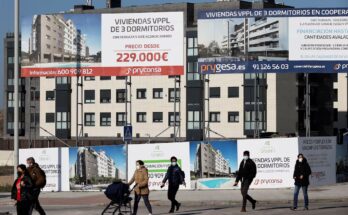The parquet costs 8,000 euros, the installation of a wooden beam exceeds 7,000 and the chimney costs 1,500 euros. These are just some of the items that María Piñeiro bitterly complains about when analyzing the budget she has just received for the renovation and expansion of a 45-meter family house in the municipality of Gondomar, Pontevedra. “We asked for four quotes from companies in the area three months ago and only received one. The others told us that they are overwhelmed or that their start date is in 2027 because they have too many contracted jobs,” he says. The budget exceeds 3 thousand euros per square meter “for a space that has no partitions, no bathroom, or great technical complexities”, despite being a very efficient house (passive house). “After two years of negotiations for permits and with a closed budget in hand, we asked ourselves: is it really worth it?”, complains Piñeiro.
To understand why budgets for any renovation have become more expensive and deadlines for starting construction have gotten longer over time, we need to go back five years. The pandemic has completely changed citizens’ relationship with their home. The demand for reforms to meet the new needs emerging from the confinement has skyrocketed. “There was brutal demand, waiting lists and overwhelmed suppliers. The pandemic was the biggest turning point I have seen in 25 years of profession,” says César Martín, founder and director of ArQuality, an architectural firm specializing in global renovations and rehabilitation of homes in the Community of Madrid.
This also had an impact on prices, especially after the start of the war in Ukraine in 2022. “The whole business has become more expensive due to the very strong increase in energy prices,” says Álvaro Vega, regional director of PlanRadar in Spain, France and Italy, who estimates the increase in material prices between 10% and 40% from 2020.
The construction cost index of the Ministry of Transport, Mobility and Urban Agenda recorded an increase of 29% between 2020 and 2024. If labor is also taken into account, the figure rises to 23%. Steel, aluminum and wood have increased more than 25% in less than two years. “Cement, concrete, glass, radiators, boilers and sanitary appliances have become more expensive by around 40% since 2020”, says Germán Pérez, president of UVE Valuations, who recalls that “renovation prices are more expensive than their equivalents for new constructions since they are smaller works”.
Carpentry, electrical and cladding works have been the most affected, since they are those that combine the most expensive materials with the most specialized labor: in carpentry, all custom-made pieces (fronts of wardrobes, windows…); In electricity, in addition to copper, greater influences on electrification, while in coverings, porcelain stoneware and ceramic tiles have increased due to the price of gas.
Returning to the present, it turns out that all these costs have not come full circle. “The market has readjusted upwards and seems permanent,” says Martín, who says that now that material prices have stabilized, it’s labor that makes renovation budgets more expensive. “There’s no room to fix anything, it’s that simple, there’s more demand than manpower,” he says. A carpenter charges between 25 and 35 euros an hour for labour, up to 60 euros for doors and wardrobes and up to 150 if they are lacquered.
Albert Jané, technical director of the company Aqui tu Reforma, quantifies that “labor has become up to 20% more expensive, especially in items that require qualified personnel”. Trades such as bricklaying, drywalling, plumbing and electrical work require skilled, trained professionals to carry out what is known in construction jargon as “excellent work”, he explains.
This is the main reason for delays in delivering quotes and starting and completing works, which has a direct impact on prices. “Execution times have been lengthened by more than 20% in the case of comprehensive reforms, by around five to six months,” says Carlos Candanedo, CEO of Gilmar Soluciones Constructivas. “We experience it every day: there are projects that are delayed for weeks just because a specific installer is missing,” says Martín.
And to add more fuel to the fire, demand remains high, even if “the growth rate has moderated compared to the post-pandemic boom”, says the technical director of Aqui tu Reforma. A question that opts for a global remodeling. “The increase in the purchase price of homes and the scarcity of supply have pushed many people to decide to completely renovate the house they live in. The customer is looking for more comfort and more energy efficiency”, explains Candanedo. At Gilmar Soluciones Constructivas, seven out of ten jobs are global renovations, compared to 30% which involve small improvements (bathrooms, kitchens, external carpentry…). Those who manage to buy a house, either for their own use or to rent it, also resort to improvements. “A renovated house can increase the sales price by 25%,” explains Candanedo.
The invoice
The budget depends on a multitude of factors. The location, the size of the house, the previous state, whether there is a lift and parking, whether special licenses are required are important… A reference for knowing the costs is Madrid, which, together with Barcelona, are the most expensive markets: between 600 and 1,200 euros per square meter, depending on the quality. A basic quality renovation can vary from 450 to 600 euros per square meter, a medium quality renovation varies from 700 to 900, and a prize It can exceed 1,000 euros, according to ArQuality, whose market analysis is based on specialized sources, companies in the sector, comparison platforms and official organisations. “A 100 square meter house costs between 45,000 and 90,000 euros, depending on the quality,” explains Martín.
The goal is to adapt the house to its owner’s lifestyle and not vice versa. «They ask to change the distribution, for example, they ask for kitchens open to the living room, as well as the change of air conditioning systems, especially for air-thermal heating with underfloor heating», says Candanedo. “Another element that has clearly increased is heating or air conditioning, due to a brutal modernization due to the need to reduce energy expenditure as much as possible,” explains Martín.
The customer wants open spaces, bright areas, energy efficiency and comfort for teleworking. According to the CEO of ArQuality, “renovations are no longer done just for aesthetic reasons, but for a vital strategy. Therefore, most of the work today is global, both reconfiguring spaces and updating all structures with mediocre finishes.”



